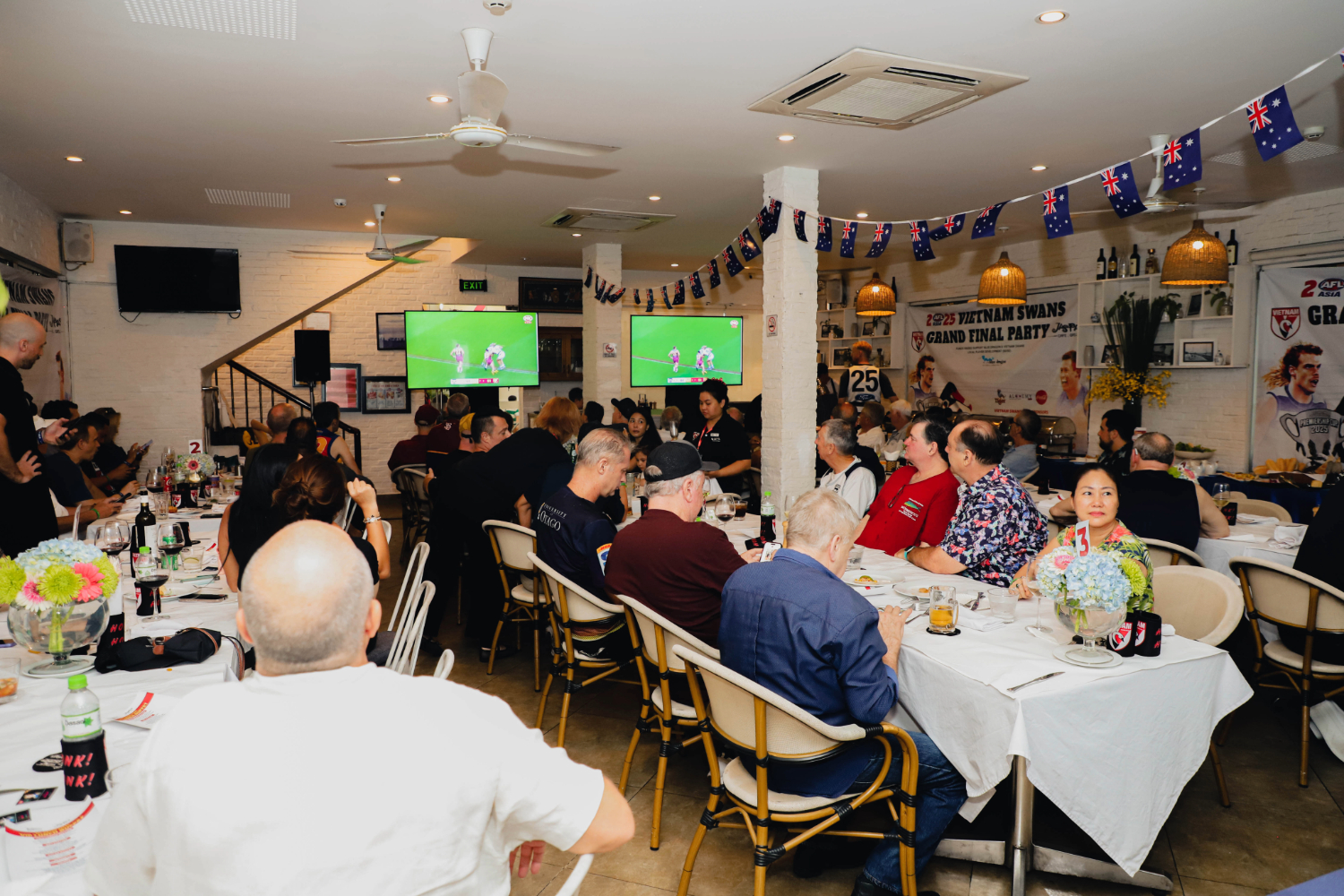
The inaugural EAAFL match played between Cambodia and Vietnam on Australia Day, 2013. Courtesy, Phnom Penh Post.
World Footy News continues its series on footy in Asia. Today’s article, “Asian Footy future – East Asia Australian Football League” is by Shane Hendrickson.
An excerpt is below.
We’ve been discussing the future of footy in Asia and in particular calls to involve more locals. One proposal was a peak body to help promote and coordinate the game, including with more internationals and quotas to ensure most players are locals. The difficulty of getting that started is the cost of travel, something expats normally find more viable. As it turns out several Asian clubs have already committed to a league in 2013, inevitably to be expat dominated, but hopefully a basis on which to build deeper roots in their adopted countries.
The Vietnam Swans have put forward a proposal to the Asian footy community of an East Asia Australian Football League (EAAFL) in an effort to bring structure, uniformity and increased credibility to Asian football. The eventual objective is to be able to play a home and away series throughout the year, have a ladder and be able to state a premier at the end.
With clubs existing in Malaysia, Singapore, Laos, Cambodia, Thailand, Hong Kong, Indonesia, China, the Philippines, East Timor, Japan and Vietnam, the potential number of teams able to participate is considerably high. Teams of expatriates are generally better funded and would most likely make up the majority, but there is also reasonable growth of teams with local talent.
Malaysia, Cambodia, Vietnam and Thailand earlier confirmed their participation for the 2013 season, and in late breaking news Jakarta (Indonesia) and Singapore have joined in the last week and and just in the last couple of days Laos became team number seven. More teams may follow suit in the coming weeks.
…The EAAFL is a promising step in Asian football, which has struggled for a centralised body and with players generally confined to expatriate communities. Hopefully the new league will be successful and gain interest from the locals and sponsors able to make the event even bigger. Questions yet to be answered include whether it will strongly push for local involvement, perhaps incorporating some of the ideas discussed in our ongoing Asian series, and will it seek to be a formal peak body. 2013 will be a good indicator to gauge interest, but we will have to wait until 2014 to see how successful the league really is…
To read the full article on World Footy News’ website, click here.




















